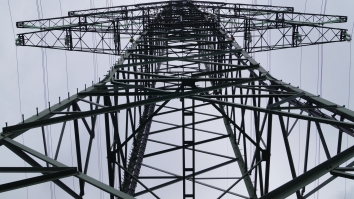
Russian EPC in Asia: a roadmap for a new solution in the power sector
By Marat ZapparovOne of the hottest topics amongst sponsors, contractors and financiers involved in Asia’s power sector today is the growing competition felt by all participants in the industry.
Competitive bidding has become almost the default route for governments to procure generation capacity, with tenders in the region generating strong interest from a range of industry players. As an example, the latest Independent Power Producer (“IPP”) solicitation to hit the market, the Prai gas-fired project in Malaysia, attracted over thirty pre-qualification applications and resulted in nine shortlisted bidders. In this intensely competitive environment, sponsors must continue to innovate and surprise the competition, whether with an innovative financing structure or a highly competitive capital cost, in order to deliver winning proposals to the off-taker with the lowest tariff amongst the competition, whilst maintaining shareholders’ returns at acceptable levels.
Three broad elements constitute the jigsaw that is a competitive tariff: (a) sponsor’s target IRR; (b) EPC contract price; and (c) cost of debt finance. This commentary discusses the latter two elements – closely inter-related, these are often the subject of much iteration and where a great deal of choice and scope for innovation lies.
As a project financier closely involved in Asia's IPP sector I see sponsors spend many hours, days and weeks soul-searching for the right EPC solution, one which would not only deliver a competitive contract price, but which would also allow the sponsor to tap into a specific source of liquidity associated with the country of origin of the EPC contractor and the equipment. In an era of tightened liquidity from international banks, access to finance must be one of the key factors influencing the choice of the EPC strategy. Popular EPC “solutions” used in the region include:
• Japanese equipment suppliers and contractors, supported by long-dated financing from Japan’s development institutions JBIC and NEXI;
• Korean EPC contractors such as Doosan, Hyundai, Daelim, providing access to Korean export credit agency (“ECA”) financing from K-Sure and KEXIM;
• Established European EPC contractors such as Alstom and Siemens, with cover from French and German ECAs;
• More recently – Chinese EPC solutions providing an undisputed contract price advantage such as SEPCO III, with access to funding from Chinese policy banks under Sinosure cover.
Selection of the most appropriate solution has many nuances, which will not be the subject of this discussion. Nevertheless, the above solutions have become relatively established, to the point where, if a competitor’s EPC strategy is known, sponsors and their advisors can infer the overall financing plan (and hence, estimate the cost of debt) likely to be implemented by a competing bidder. As such, sponsors’ capacity to surprise the market continues to diminish as the EPC solutions become even more established and known.
It thus seems an opportune time for a new entrant into the market, a player that is able to offer a compelling and deliverable package to sponsors and throw an additional unknown factor into the competitive mix. A strong, experienced, high-quality, cost-competitive EPC contractor and equipment supplier, with the additional ability to provide access to a new pool of liquidity on attractive terms, is unquestionably a compelling proposition to a regional sponsor looking to participate in a competitive tender.
As a Russian native, I have natural interest in seeing the country succeed and realise its potential. No doubt, the country should look east and develop enduring ties with the emerging markets of Asia. What can Russia offer investors and developers in the power sector in Asia?
Russia’s Soviet past, whilst often associated with a period of decline, has one very important, but often overlooked, legacy – the industrial complex. Many formidable industrial machine-building companies, particularly in the energy sector, arose out of Soviet manufacturing sector, such as E4 Group, OJSC Power Machines, which benefit from decades of expertise in the power sector, an extensive legacy of R&D and experience of executing complex projects in difficult geographical conditions. The execution ability of such players is without question.
So, how do Russian contractors enter the active and growing Asian power market? The following sets out a roadmap for the “Russian solution” to become a genuine alternative for developers around the region.
1. Financing. It is vital that a Russian contractor entering the sector is able to bring Russian liquidity to support its involvement. It is time that a concerted effort is made by the Russian government to promote Russian export and private investment globally, following the model utilized by European, US, Japanese, Korean and, most recently, Chinese governments and development institutions. Russian development institutions such as VEB (Russian Development Bank) and the newly created Russian ECA EXIAR must actively support and promote involvement of Russian contractors in the power sector in Asia by developing a competitive and deliverable financing structure that can be utilised by Russian contractors and investors. Ability to mobilise significant USD-denominated financing from or via these institutions would be the key selling point that a Russian contractor is able to offer an Asian investor;
2. Investment. Russian EPC contractors looking to enter the sector must be prepared to invest capital in order to win construction contracts. A concerted effort is required to identify the project pipeline, develop relationships with regional investors, form consortia and partnerships, hire financial and legal advisors experienced in the region, participate jointly in government tenders. Partnerships with established regional players in order to invest into
special purpose vehicles (“SPVs”) bidding for IPP concessions would provide the investor a route to sell its EPC contractor capabilities to the SPV;
3. Contractual terms and "bankability" considerations. The EPC contracting model is a must in the IPP sector. Contractual terms must be of international standard and “bankable”, including appropriate performance guarantees, liquidated damages, warranty and defect liability periods of sufficient lengths, appropriate levels of risk taken on by the contractor, performance and warranty bonds, liability cap levels and others. Contractors entering the international space must be prepared to accept contractual terms that may not necessarily be usual in their home
markets;
4. Last but not least, there needs to be a strong collaborative effort by Russian corporates together with state development and investment promotion agencies to raise the brand profile of Russia and its corporates, articulate what the country is able to offer Asian investors and consumers and promote a consistent message to the Asian audience. Russia needs to reinvent its brand beyond outdated clichés and drive the message that its manufacturing powerhouse can offer a competitive edge to investors globally.
In conclusion, a coherent package of strong technical execution skills under an EPC contracting model of international standard, together with ability to mobilize a large pool of liquidity from Russian development institutions on competitive terms would be a convincing proposition to Asian power developers continuously seeking innovative ways to beat the competition. Emergence of such a “Russian solution” will no doubt take a great deal of effort on behalf of Russian contractors, state agencies and state financing institutions. However, as Asia continues to grow and build out its infrastructure, a concerted effort by interested stakeholders can turn this into one of the major trends in the coming years and open a new investment and trade corridor for the benefit of Asian investors, Russian manufacturers and ultimately, the Asian consumers of energy.
























 Advertise
Advertise







